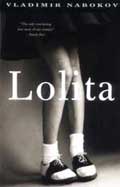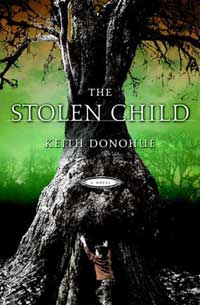& Search the Book
A Double Life (Or, A Memoir in 12 Little Pieces)
1. When I was a young boy, some people thought I looked like Opie from "The Andy Griffith Show."


The red hair, probably, but it made me feel different, which led me to Derrida's famous essay Differance. (The French, they are so different.) It made me re-read everything I had ever read.
2. The "red" motif continued throughout childhood. Consider this image of a red haired boy who played outfield for the Reds* who has read everything twice and remained unsure of its meaning. It was at this stage of life that I began lying to my parents.

We children were to hurry home to dinner from our scattered playing places whenever we saw my father's car parked in the driveway. Head in the clouds, I never managed to see that car until well after he had arrived, and so I started making up excuses - stories - as to why I was late. For some reason, they never seemed to believe the ones about being chased by wild animals.

*The sponsor, I believe, was the local branch of the International Workers of the World. Or perhaps, everyone on the team was required to have red hair.
3. A constant reader and wholly impressionable lad, I decided to become a writer in 1974 and imitate Woodward and Bernstein, the reporters who uncovered Watergate. Not the real Woodward and Bernstein, but Redford and Hoffman, who made writing look interesting and glamorous. The line between the real and imagined is further blurred.
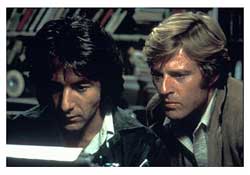
4. College/collage. Abandoning my goal of working for The Washington Post, I begin to read and write in earnest. Juvenilia appears everywhere.
5. Following stints as a construction worker, cigar store manager, and box office clerk at the Pittsburgh Public Theatre, I land my first "job" at the National Endowment for the Arts, answering mail for the agency's chairman. I was the first person to realize that there is a problem when letters arrive complaining about 'controversial' artworks.
|
Not this: |
Or this: |
Or even this: |
Many of the hundreds of letters include an item from a newsletter explaining what the work represents. The newsletter also solicits a 'contribution' of $35 to help combat evil art. I begin to realize that this is an interesting way to make $35.
6. My favorite years at the Endowment coincide with the arrival of Jane Alexander as chairman and the advent of the World Wide Web. I wrote speeches, articles for the web, print publications, created programs, and even began my doctoral dissertation. Residue of these projects:
7. But the double life continued to pull. In my "spare" time, I was writing short stories, sending them away, getting them back. Some of these appeared in:
and in Cricket for children.
8. I become a doctor, but a doctor with a differance, a doctor of philosophy in English. Derrida, if I read him right, would be proud. Years are frittered away on the work of Irish novelist Brian O'Nolan,* who wrote novels as Flann O'Brien and a daily column called "Cruiskeen Lawn" in the Irish Times as Myles na gCopaleen. He is a very funny writer, viz.:
In reply to an inquiry, it was explained that a satisfactory novel should be a self-evident sham to which the reader could regulate at will the degree of his credulity. It was undemocratic to compel characters to be uniformly good or bad or poor or rich. Each should be allowed a private life, self-determination and a decent standard of living. This would make for self-respect, contentment and better service. It would be incorrect to say that it would lead to chaos. Characters should be interchangeable as between one book and another. The entire corpus of existing literature should be regarded as a limbo from which discerning authors could draw their characters as required, creating only when they failed to find a suitable existing puppet. The modern novel should be largely a work of reference. Most authors spend their time saying what has been said before--usually said much better. A wealth of references to existing works would acquaint the reader instantaneously with the nature of each character, would obviate tiresome explanations and would effectively preclude mountebanks, upstarts, thimbleriggers and persons of inferior education from an understanding of contemporary literature.
That's all my bum, said Brinsley.
That's from At Swim-Two-Birds. All of his books are in print and available at the The Dalkey Archive. *Another coincidence? Brian O'Nolan worked for a number of years for the federal government of Ireland. Talk about your double life.
9. Under the old chestnut, I began work on "The Stolen Child" in late 2001. Two years later, the sage and insightful Peter Steinberg rescues the manuscript from the slush pile. Mirabile dictu, it is sold to Nan A. Talese/Doubleday, and to Jonathan Cape in the United Kingdom.
Translations to come in several other languages. I pledge to re-read it some day.
10. Following the international success (it was very big in Taiwan) of Stolen Child,* I waited for someone to come along and write my next book for me. Perhaps expecting an angel to knock at the front door, I sat down and wrote Angels of Destruction, hatched in a mind of winter, with images of “angels in the architecture,” as Paul Simon would say, “spinning in infinity.” Once you start thinking about angels, they’re everywhere, and I was particularly struck by the painter Paul Klee’s angel series. They fit in nicely with the story of a mother’s desire for her missing daughter, and off we went.
The manuscript caught the highly perceptive eyes of Shaye Areheart, and a match was made.
*The best part of the novel experience is the actual writing process, when the right word appears as if on cue, or when obsessing over the real details of an imaginary situation. The second best part is meeting so many people who love to read books. Like a cult. You can tell them by the dark circles under their eyes, the papercuts on their fingertips, and their disdain for such social constructs as reality, or realty TV.
11. Top Ten Questions and Possible Answers
1. Where do you get your ideas? My publisher would kill me if she knew that I told you, but there is a List the publishers send around to all the writers. Rumor is Stephen King wrote it.
2-4. When, where, and how do you write? I highly recommend pen and paper. Plus, if you write for many years, you develop an idiosyncratic style, and nobody but you (and sometimes not even you) can decipher your handwriting. If you ever lose your paper, your poor penmanship prevents someone from simply typing it up and publishing it on the Internet or with a major publisher.
5-6. Why have you written about fairies and angels? Are you a fantasy writer? I only write about what interests me at a particular moment, and that comes and goes. I don’t consider myself a fantasy writer, and one day I may make up an entire story about real people, invent a real setting, and create a real plot.
7. How may I help you? Buy lots of copies.
8. Would you walk the dog? Yes.
9. Are you serious?
10. What are you working on next? Right now, I’m teaching a course on the contemporary American novel at Catholic University of America in Washington, DC, squeezing in some time to write a new novel, and there’s always that dog (see #8) and so forth. The beautiful thing about teaching is that I get to read some favorites again—and closely—like Housekeeping, Blood Meridian, Beloved, and as always, learning from the others in the class.
12. "He led a double life. Did that make him a liar? He did not feel a liar. He was a man of two truths." -- Iris Murdoch
For the time being, my hair is still red, although I don't get mistaken for Ron Howard any more. I work during the day in communications and write at night, on the subway, in the mornings as life allows. My family - four kids - is yet another truth, perhaps the truest truth of all.
Photos of the four darlings as babies:


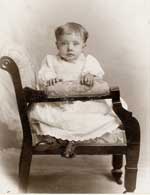
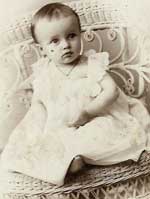
Format: Trade Paperback, 368 pages
On Sale: October 13, 2009
Price: $15.00
ISBN:978-0-307-45026-5 (0-307-45026-0)
- >> Audible.com
- >> eMusic
- >> iTunes

